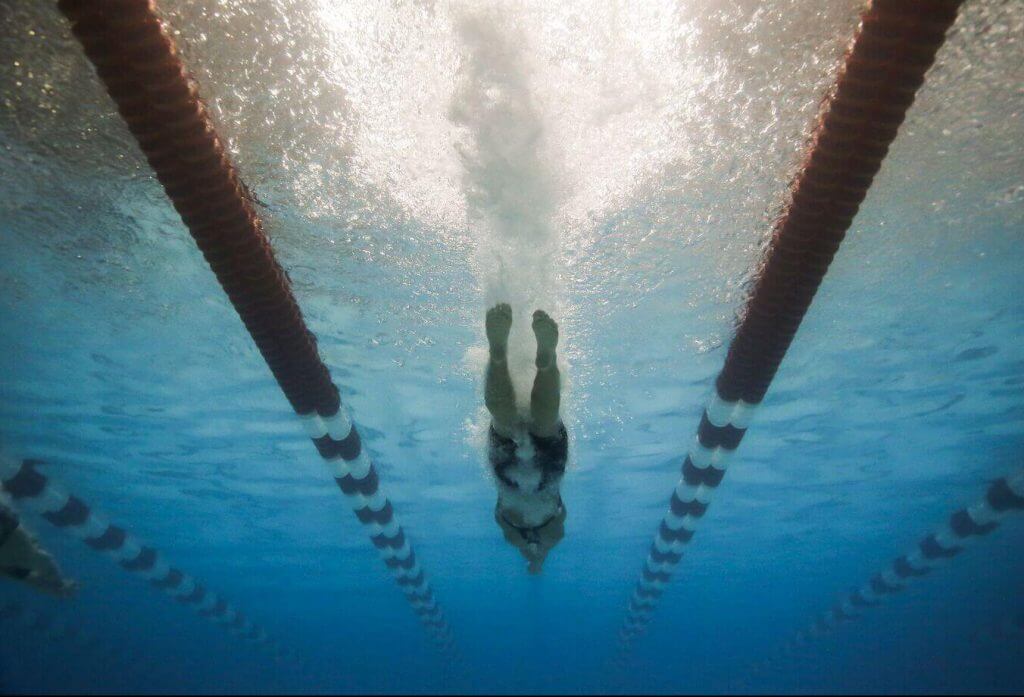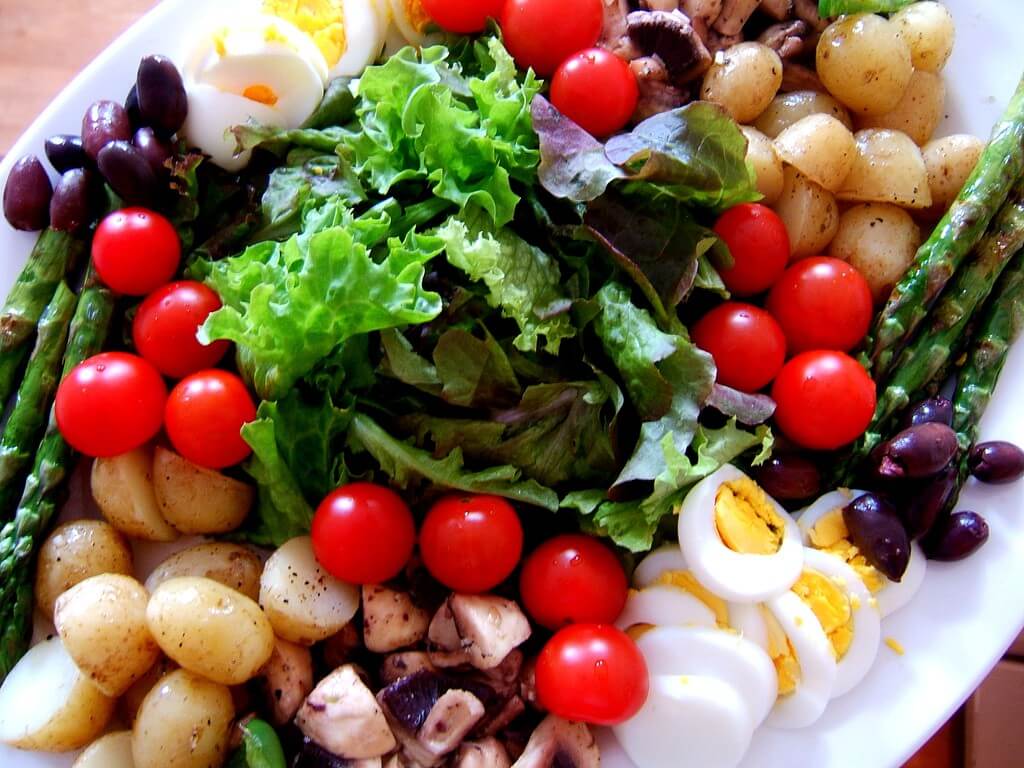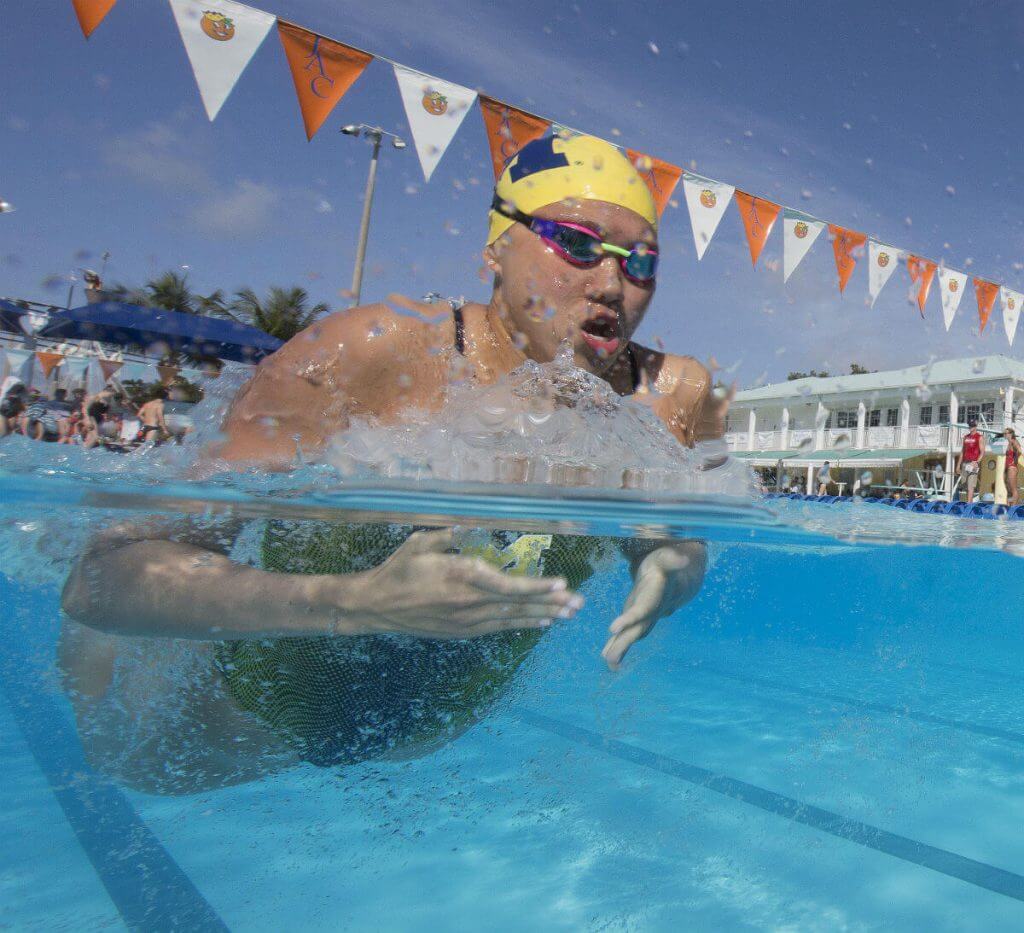A Huge Mistake 75% of Swimmers Make

By Dawn Weatherwax RD, CSSD, LD, ATC, CSCS.
Swimming World Guest Contributor.
What’s a mistake 75 percent of swimmers make this which directly impacts performance? Seventy-five percent of all swimmers do not eat enough! (Hinton at el.) The average female high school/collegiate swimmer needs ~2200-3500 calories a day and males can range from ~3000-5000 calories a day!
Why is this so important? Food by definition is a calorie. Calorie by definition is heat and heat by definition is ENERGY!
Food = Calorie = Heat = Energy!
FOOD = ENERGY!
Athletes need optimal energy to recover, refuel, recharge and perform! If a swimmer is under-fueling on a continuous spectrum, then there is no way they can reach their full potential in growth, health and swimming. This happens at all ages. The problem is compounded by increased yardage. When training intensifies, most swimmers don’t increase their caloric intake to match. This can only lead to substandard outcomes. Even if they performed well that year, they could have performed better if all being equal.

Photo Courtesy: Jessica Spengler, flickr
How do you know if you are eating enough?
Online: Calculate your Total Energy Expenditure (TEE) and log current nutrient intake. TEE tells you how many calories you need per day. Your next step would be to log your daily food and hydration intake to make sure you are consuming the amount of calories it is saying. Some good TEE and logging sites are ChooseMyPlate (this one fits all ages!), MyFitnessPal and SparkPeople. Please note that the calculations on these sites are not always optimal for athletes or individualizing caloric needs, but they are still a good place to start, especially for the novice swimmer.
In Person: Indirect Calorimetry or Resting Metabolic Rate (RMR) testing. This is what I do at my business– Sports Nutrition 2Go. We do an actual measurement of how many calories you burn (RMR). Then we do an extensive food and exercise recall to see if this matches the recommended measurement/calculations and individualize from there. Some places that have these devices can travel. This measurement is highly recommended for the serious or elite swimmer and should be measured at least one time a year. The change in daily caloric needs vary greatly depending on training. Working with a sports dietitian is highly recommended to make sure caloric needs match all different levels of training throughout the year. In general, athletes have RMRs that are ~5% higher than their non-athletic individuals.
Below is an example of a male swimmer we work with. When he first came in he was only in taking an average of 3000 calories a day and with RMR testing we found out he needed 4500 calories a day to meet his needs. The other example is a collegiate female swimmer. Please understand that outcomes vary and they did not just change their calorie consumption to have these results.
Male Swimmer
October, 2017
- 6’4
- 3000kcal a day
- Times have plateaued
December, 2017
- 4500kcal a day
- 6 seconds off 500 free
- 2 second off 200 free
- 1.5 seconds off 100 back
- 1.3 seconds off 100 fly
- 3 seconds off 200 back
Female Collegiate Swimmer
Only eating ~2200kcal a day
- Under-eating by 700-1200kcal a day
- Outcome: Became the first All American at her college that year

Photo Courtesy: Stephen Frink/Florida Keys News Bureau
Genome Testing
This is new and is used in addition to Resting Metabolic Rate Testing. The UCP1 gene is found in adipose (fat) tissue and is important in regulating normal body temperature and can impact RMR. Some may need more or less calories than the RMR test suggests pending on this gene. The test is done with saliva and can be shipped to you by a health professional. At my office we then take this information and individualize your data even further. Again, likely for the serious or elite swimmer.
Next Steps
Now you know how important it is to eat enough. Food = Energy. Energy maximizes recovery, repair and performance.
The next important question…….does it matter what you eat and when? The answer is YES! No doubt! Look for this article in the future.
About the Author
Dawn Weatherwax is a Registered/Licensed Dietitian with a specialty in Sports Nutrition and Founder of Sports Nutrition 2Go. She is also a Board Certified Specialist in Sports Dietetics, which is the premier professional sports nutrition credential in the United States. In addition, she is an Athletic Trainer with a Certification in Strength and Conditioning from The National Strength and Conditioning Association. Therefore, she brings a comprehensive and unique understanding of the athlete’s body, and its nutritional needs, to those interested in achieving specific performance goals and optimal health. Weatherwax is also the author of The Official Snack Guide for Beleaguered Sports Parents, The Complete Idiot’s Guide to Sports Nutrition and The Sports Nutrition Guide for Young Athletes. She is an Official Speaker for the Gatorade Sports Science Institute and was on the approved speaker list for the NCAA. She has also been featured on television and magazines including: Good Morning America, MSNBC, Oxygen, Spark and Shape
All nutritional research was conducted by the author and does not necessarily reflect the views of Swimming World Magazine nor its staff.




Anais
Great article ❤️
Good to know!
Zain Fitzsimmons did you read this article
Juan Sebastian Enriquez Villamil
It’s very true
Mason Amble
Gemma Atherley
Graham Johnstone
Greg Poetschka
Charlie Hopkin
Anicée Heylemans-Demeur
Jordan
Jacob Stewart
But, not through lack of trying! Swimmers are legendary calorie consumers.
I think the second biggest mistake is the consuming huge calories after team and individual swimming is done. Then, weight gain is difficult to fight.